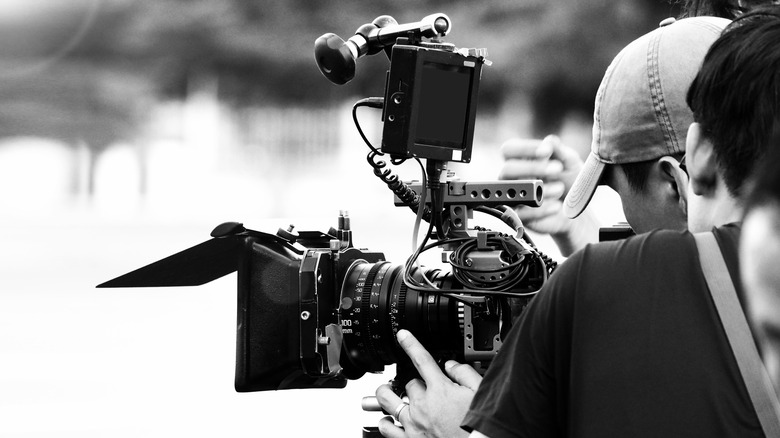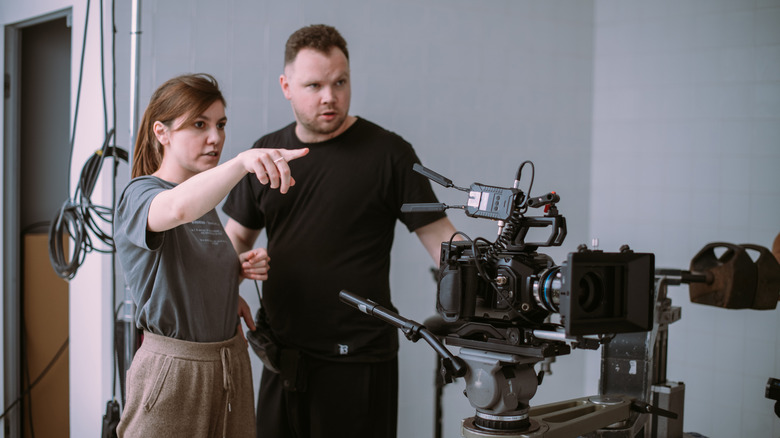Is The Director Of Photography The Same As The Director?
We may receive a commission on purchases made from links.
If you're the kind of person who sits until the very end of a movie and reads the credits, you may have wondered about the difference between a film's director and director of photography, also known as the cinematographer. Are these even different jobs? It turns out that directing a movie and directing the movie's photography are different actions, although they are absolutely dependent on one another and must collaborate successfully in order to make a good film. Per Indeed, a movie's director is in charge of the entire creative process involved in bringing the project to fruition; it's the director's vision that determines how a script makes its way from the page to be translated into the visual piece of work eventually seen on a screen. Their responsibilities are wide-ranging and include suggesting or governing how actors perform their roles, reviewing, editing, and updating scripts, advising on the look and sound of all aspects of the film, and leading the editing of the film.
The director of photography (DP) or cinematographer is responsible for envisioning and creating the visual effects within a movie. That person works closely with the director, as the director is ultimately in charge and responsible for the entire film as a whole, but the DP is also then in charge of making sure the cameras, lights, and sound equipment and all of the people who run the equipment are working in sync to ensure that the film's look matches the vision of the director.
The important relationship between a director and a cinematographer
According to MasterClass, a director of photography or cinematographer controls everything a camera can capture, which includes the composition of shots, exposure, lighting, filters, and the cameras' movements. They will often brainstorm with the film's director about the tone, color palette, and other films that could inspire the look and feel of the work. This is often done with the help of mood boards or look books that assemble visual ideas and inspiration for perusal and discussion.
Cinematographers are often responsible for assembling camera and lighting crews, and though on films with smaller budgets they may serve as a camera operator, on movies with larger budgets, the DP will instruct camera operators and their assistants, gaffers (who oversee lighting and electrical), and key grips (who maintain cameras and lights and operate dollies, cranes, and other non-electric equipment). Most DPs start out as members of a camera or lighting crew.
Directors and cinematographers often form close working relationships and continue to collaborate for many years. Per Indie Wire, examples include director Wong Kar-wai and cinematographer Christopher Doyle who have worked together for over 30 years on movies like "Chungking Express" and "In The Mood For Love" and directors Ethan and Joel Coen and cinematographer Roger Deakins, who have made nearly a dozen films together starting with 1991's "Barton Fink." Occasionally, a director will serve as their own director of photography, such as Alfonso Cuarón, who won both the Best Cinematography and Best Directing Academy Awards for his 2018 film, "Roma." The most extreme example is director Steven Soderbergh who under the pseudonym Peter Andrews has been his own cinematographer since 2000's "Traffic."

